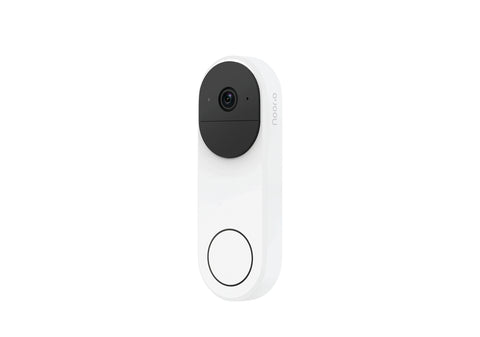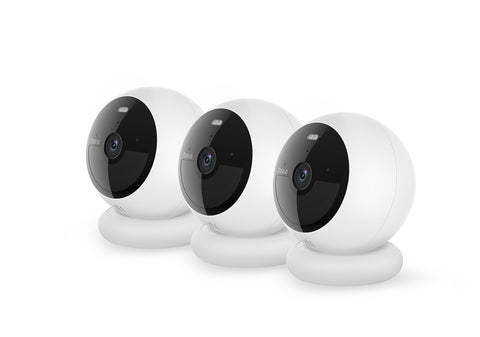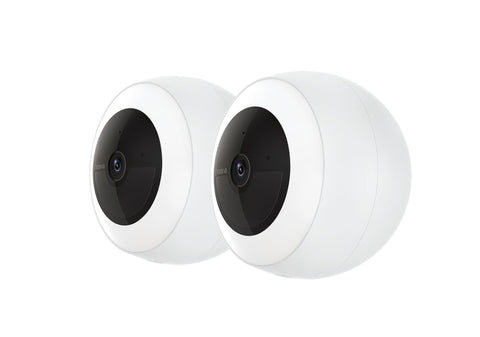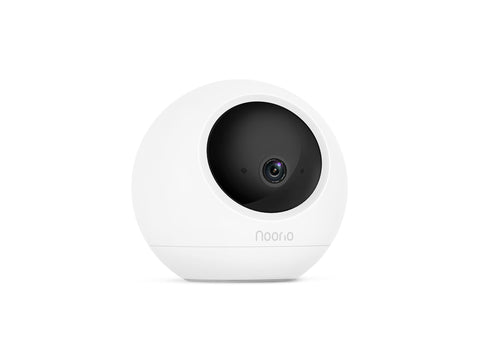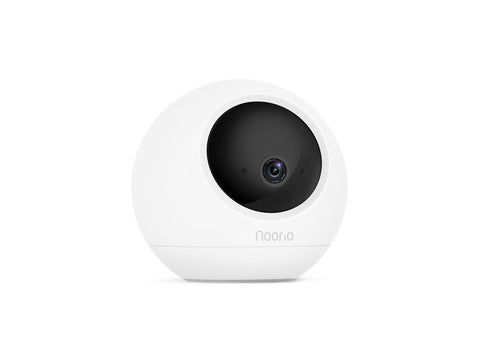Introduction
Technology is continually evolving, giving birth to innovations that redefine our living spaces. Smart home technology, a perfect embodiment of this evolution, is fast becoming a mainstay in our daily lives. Its surge has been so notable that by 2023, an estimated 70% of households in the US are predicted to have at least one smart home device. One such gadget is the security camera, which, when integrated with a smart home system, promises a transformed home security experience.
Integrating security cameras with smart home systems offers a wealth of benefits. It allows homeowners to monitor and control their security cameras remotely, receive instant alerts on unusual activities, and even automate security processes. This blog post aims to guide you through essential tips and tricks for successfully integrating your home security cameras with smart home technology.
Choosing Compatible Security Cameras and Smart Home Systems
Identifying the right devices for your smart home setup is fundamental to ensure a seamless integration experience.
Popular Smart Home Platforms and Ecosystems
- Amazon Alexa: Amazon's ecosystem has a robust line-up of smart devices, including Echo Dot and Echo Show. You can control your security cameras using voice commands or view live feeds directly on your Echo Show screen, making it convenient for real-time monitoring.
- Google Assistant: With devices like Google Home and Google Nest Hub, Google Assistant offers an intuitive smart home experience. You can ask Google Assistant to show your camera feeds on your Google Nest Hub or on a Chromecast-enabled TV.
- Apple HomeKit: HomeKit excels in the privacy domain, offering end-to-end encryption and data anonymization. Despite having fewer compatible cameras, its Secure Video feature lets you store recordings in your iCloud account, preventing unauthorized access.
- Noorio APP: The Noorio App is a comprehensive solution that ties together all Noorio devices. You can monitor your security cameras, manage your solar panels, and control video doorbells, all from one place. Noorio app on Google play store.

Researching Security Camera Compatibility
- Checking for Platform-Specific Logos or Certifications: Look for certifications that signify compatibility. These are usually seen on the product box or the online product listing. For instance, a security camera compatible with Alexa will sport a 'Works with Amazon Alexa' badge.
- Reading Product Descriptions and User Reviews: Scour through product descriptions for detailed specs, feature lists, and compatibility information. User reviews offer invaluable insights into the real-world performance and compatibility issues of the product.
- Considering Future Expandability and Compatibility: As you plan your smart home, consider how easily you can add more devices in the future. Opt for security cameras that use standard wireless protocols like Zigbee or Z-Wave, as these are compatible with a vast range of smart home devices.
Setting up and Connecting Security Cameras to Smart Home Systems
With the right devices at hand, it's time to set them up and create your smart home security system.
Installing and Configuring Security Cameras
- Following Manufacturer Guidelines: Manufacturers provide detailed instructions, either in a manual or through a smartphone app. These guidelines will help you install your security cameras correctly, whether you're mounting them on a wall or placing them on a shelf.
- Testing Camera Functionality: Test your camera's functions like live video feed, motion detection, and recording capabilities. This ensures your camera is functioning correctly before integrating it into your smart home system.

Connecting Cameras to Smart Home Platforms
- Using Native Apps and Integrations: Use the corresponding smart home platform's app (like Amazon Alexa, Google Home, or Apple Home) to add your security camera to your smart home system. This usually involves selecting 'Add Device' and following the app's guided setup process.
- Leveraging Third-Party Tools and Services: If direct integration isn't available, tools like IFTTT (If This Then That) can help. IFTTT allows you to create 'applets' that link different smart home devices and services together.
- Troubleshooting Common Connection Issues: If you're facing issues, ensure your devices are on the same Wi-Fi network. Restarting your devices or resetting your router can also help resolve common connectivity problems.
Automating and Controlling Security Cameras with Smart Home Devices
One of the most significant advantages of smart home integration is the ability to automate your home security.
Creating Routines and Automation
- Triggering Cameras Based on Motion Sensors or Door/Window Contacts with Noorio: For instance, if a window sensor is triggered, your security camera could automatically start recording, capturing potential intruders. Similarly, motion detectors can trigger your cameras to send you real-time alerts.
- Turning On/Off Cameras Based on Location or Time of Day: Using geofencing, your cameras can automatically turn on when you leave your home and turn off when you return. Likewise, you can set schedules to disable recording during private moments.
Integrating Security Cameras with Smart Lighting
- Activating Lights When Motion is Detected: This not only illuminates your home but can also act as a deterrent for trespassers. If a security camera detects motion after dark, it could trigger your smart lights to turn on, simulating presence.
- Mimicking Occupancy When Away From Home: Create lighting schedules that mimic regular home activity when you're away. This makes it appear as if someone's home, deterring potential intruders.
Controlling Security Cameras with Voice Assistants
- Checking Live Feeds and Recorded Footage: Ask your voice assistant to show your camera's feed on a smart display or TV. For instance, you could say, "Alexa, show me the backyard camera."
- Adjusting Camera Settings and Modes: Some advanced integrations allow you to switch between camera modes using your voice. You could say, "Hey Google, set the front door camera to privacy mode."
Enhancing Security and Privacy with Smart Home Technology
Beyond convenience, smart home technology can significantly improve your home's security and privacy.
Using Smart Locks and Access Control Systems
- Granting Temporary Access to Visitors or Service Providers: Instead of sharing physical keys, provide temporary access codes. This gives you control over who can enter your home and when.
- Monitoring Entry and Exit Events: Smart locks log every access event. If an unauthorized person attempts to enter, you'll receive an immediate alert.
Implementing Smart Smoke and Carbon Monoxide Detectors
- Receiving Alerts and Notifications: Receive notifications on your smartphone if these detectors identify a risk. This allows you to act promptly, even if you're away from home.
- Initiating Emergency Response Actions: In case of a detected hazard, automated responses can trigger your security cameras to record, lights to turn on for visibility, and sirens to alert your neighbors.
Managing Privacy Settings and Data Protection
- Encrypting Video Feeds and Stored Footage: Most security cameras offer encryption for both live feeds and stored footage. This prevents hackers from accessing your videos.
- Regularly Updating Software and Firmware: Updates often include patches for known vulnerabilities. Regular updates will ensure your devices have the latest security protections.
- Smart home technology, when integrated with security cameras, offers more than just convenience. It empowers homeowners to manage and monitor their home's security proactively. By following these tips, you can create a secure, automated, and user-friendly smart home security system.
Conclusion
The integration of security cameras with smart home technology heralds a revolution in home security and convenience. It not only provides enhanced security monitoring but also allows homeowners to automate various processes, making their lives easier and their homes safer. By choosing compatible devices, following setup guidelines, and harnessing the power of automation, you can maximize the benefits of your smart home ecosystem. As always, keep security and privacy at the forefront, and regularly update your devices to ensure the best protection.
Read More
- Integrating Home Security Cameras with Smart Home Technology: Essentia – Noorio Innovations
- 5 Advantages and 5 Disadvantages of Noorio Cloud Storage – Noorio Innovations
- Noorio forays into home security camera industry with the launch of the new Noorio B200 – Noorio Innovations
- 8 Tips to Pick a Better Wireless Home Security Camera – Noorio Innovations
- How Long Do Security Cameras Keep Footage? – Noorio Innovations
